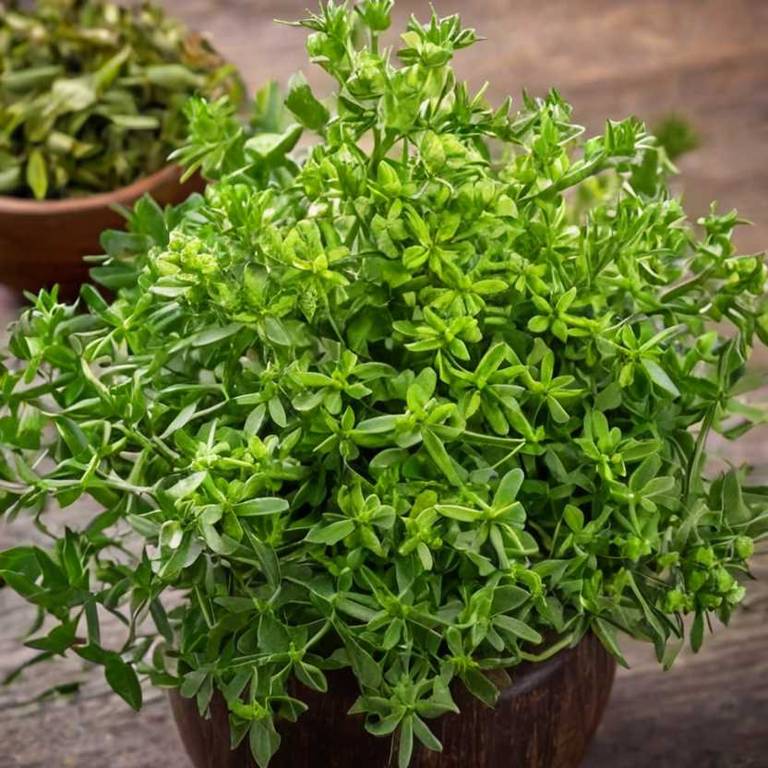By Leen Randell
Updated: Jul 07, 2024
What Are The Medicinal Properties Of Euphorbia Helioscopia (Sun Spurge)?

Euphorbia helioscopia, also known as sun spurge, has health benefits such as anti-inflammatory and antiseptic properties.
The medicinal constituents of sun spurge include alkaloids, flavonoids, and terpenes, which contribute to its therapeutic effects. The herb is traditionally prepared into infusions, tinctures, and ointments for topical and internal use. Possible side effects of sun spurge include skin irritation and allergic reactions.
It is essential to consult with a healthcare professional before using sun spurge, especially for internal consumption or long-term treatment.
This article explains the health benefits, active constituents, medicinal preparations, possible side effects, and precautions related to Euphorbia helioscopia.
- What are the health benefits of Euphorbia helioscopia?
- What are the active constituents of Euphorbia helioscopia?
- What are the medicinal preparations of Euphorbia helioscopia?
- What are the possible side effect of using Euphorbia helioscopia improperly?
- What precautions to take when using Euphorbia helioscopia medicinally?
What are the health benefits of Euphorbia helioscopia?
Euphorbia helioscopia, also known as sun spurge, has health benefits such as anti-inflammatory properties, which may help soothe skin irritations and reduce pain.
The plant's sap is said to have antiseptic qualities, promoting wound healing and preventing infection. Additionally, Euphorbia helioscopia is believed to possess antibacterial and antifungal properties, which can help combat infections and support overall immune system function.
Its medicinal uses have been studied extensively.
Here's a detailed article about the 10 health benefits of Euphorbia helioscopia.
What are the active constituents of Euphorbia helioscopia?
Euphorbia helioscopia, also known as sun spurge, has active constituents such as flavonoids, terpenoids, and cardiac glycosides.
These compounds exhibit various medicinal properties, including anti-inflammatory, antioxidant, and cardiotonic activities. Flavonoids and terpenoids also possess antimicrobial and antiproliferative effects, which may contribute to the plant's traditional uses in treating skin conditions, wounds, and other disorders.
Cardiac glycosides, meanwhile, may help regulate heart function and improve cardiovascular health.
Here's a detailed article about the 10 active constituents of Euphorbia helioscopia.
What are the medicinal preparations of Euphorbia helioscopia?
Euphorbia helioscopia, also known as sun spurge, has medicinal preparations such as oil and ointment that are used to treat various skin conditions, including eczema, wounds, and cuts.
The sap of the plant contains a compound called euphorbol, which has anti-inflammatory and antiseptic properties. These preparations are also used to treat acne, skin irritations, and minor burns, making it a valuable herb in traditional medicine.
Its extracts are also used in modern pharmaceuticals.
Here's a detailed article about the 10 medicinal preparations of Euphorbia helioscopia.
What are the possible side effect of using Euphorbia helioscopia improperly?
Improper use of Euphorbia helioscopia, also known as sun spurge, increases the chances of experiencing side effects such as skin irritation, rashes, and allergic reactions due to its sap's toxic properties.
Ingestion can cause nausea, vomiting, and diarrhea, while eye contact may lead to severe irritation, redness, and even temporary blindness.
Long-term exposure may also trigger systemic toxicity, affecting vital organs and causing more severe health issues.
Here's a detailed article about the 10 most common side effects of Euphorbia helioscopia.
What precautions to take when using Euphorbia helioscopia medicinally?
Before using Euphorbia helioscopia, also known as sun spurge, for medicinal purposes, you must take precautions such as wearing protective gloves and eyewear to prevent skin irritation and sap-induced blindness.
The plant contains a milky sap that contains toxic compounds, including euphorbon, which can cause severe skin and eye irritation.
Handling the plant requires care and attention to avoid exposure, even when using it for medicinal purposes.
Here's a detailed article about 10 precautions to take when using Euphorbia helioscopia.